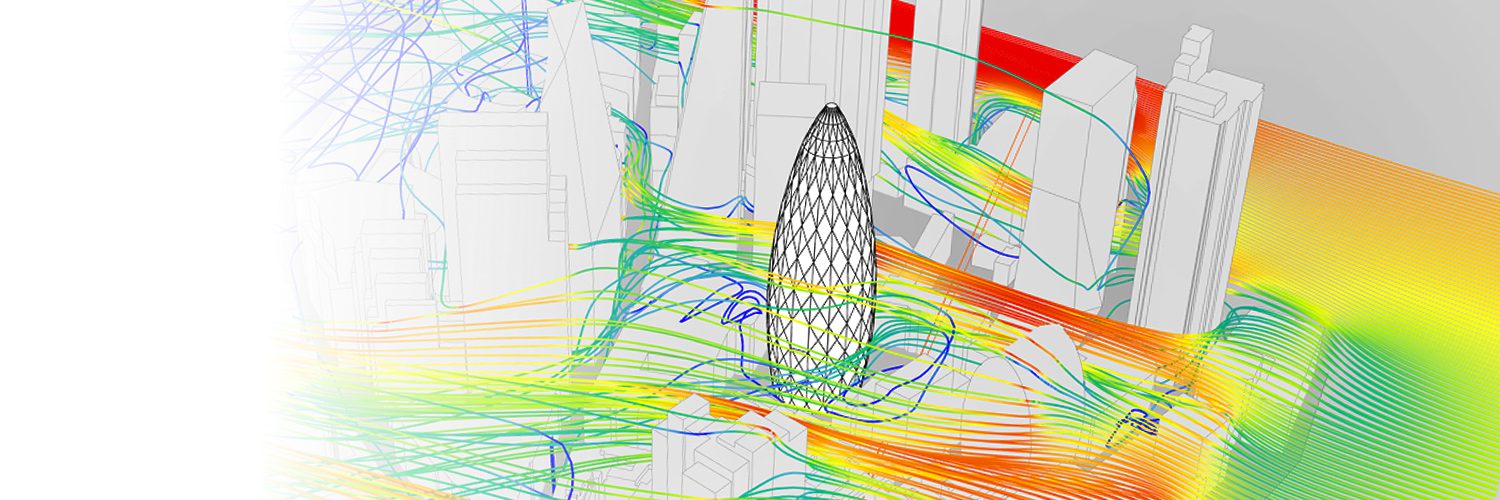
Thornton Tomasetti applies scientific and engineering principles to solve the world’s challenges — starting with their customers. Whether they are focusing on the design, construction, and performance of buildings or expanding into new disciplines, Thornton Tomasetti never limits themselves, applying their expertise to all types of projects across a range of industries.
Many AEC companies are following a traditional model where architects and designers request simulation studies from analysts and simulation experts, which can mean an inefficient process with communication overhead, long iteration cycles, and bottlenecks on both simulation experts and on-premise software licenses and hardware.
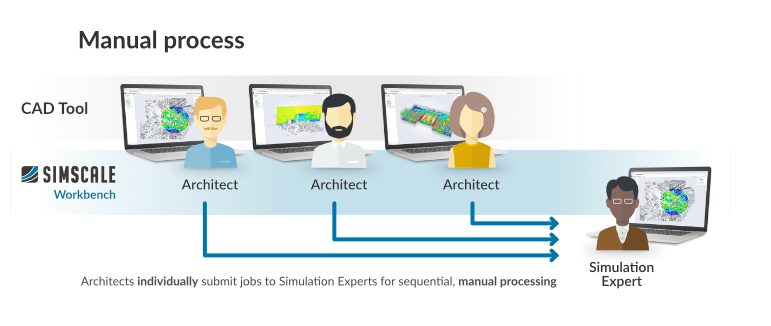
Thornton Tomasetti started innovating years ago within their CORE Studio R&D Department by developing in-house tooling suited for smooth and easy workflows for architects and designers. While this was a big step forward, there was still potential in making CFD easier to set up and more robust, and with managing compute resources and data.
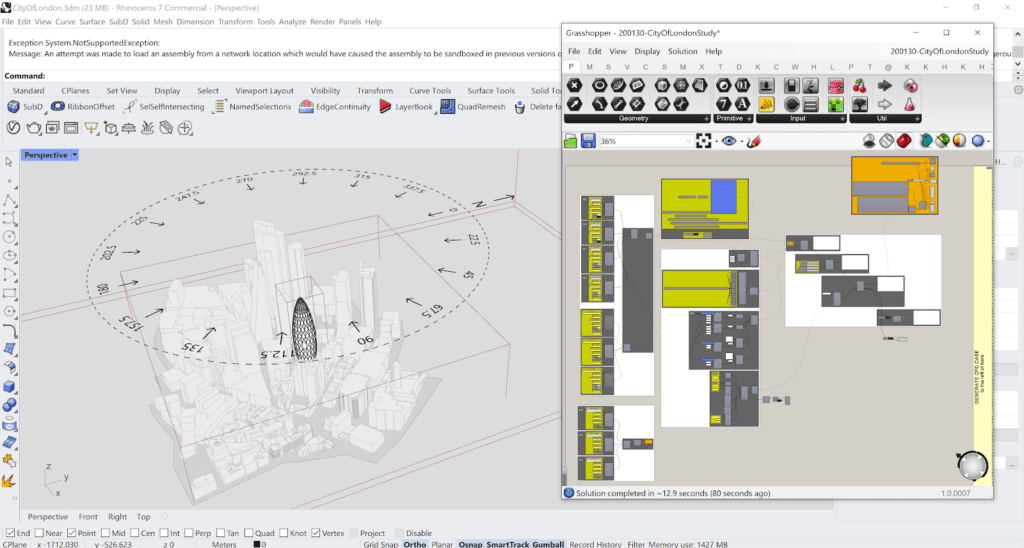
Thornton Tomasetti was an early adopter of the Pacefish® LBM solver that powers the novel pedestrian wind comfort (PWC) offering in SimScale’s workbench available through standard web browsers. The PWC tool allows for quick evaluation of a building or masterplan’s wind comfort and safety aspects, enabling transient CFD analyses an order of magnitude faster than traditional on-premises CFD software. This gave Thornton Tomasetti the capability to iterate their designs quicker and at earlier stages of the design process.
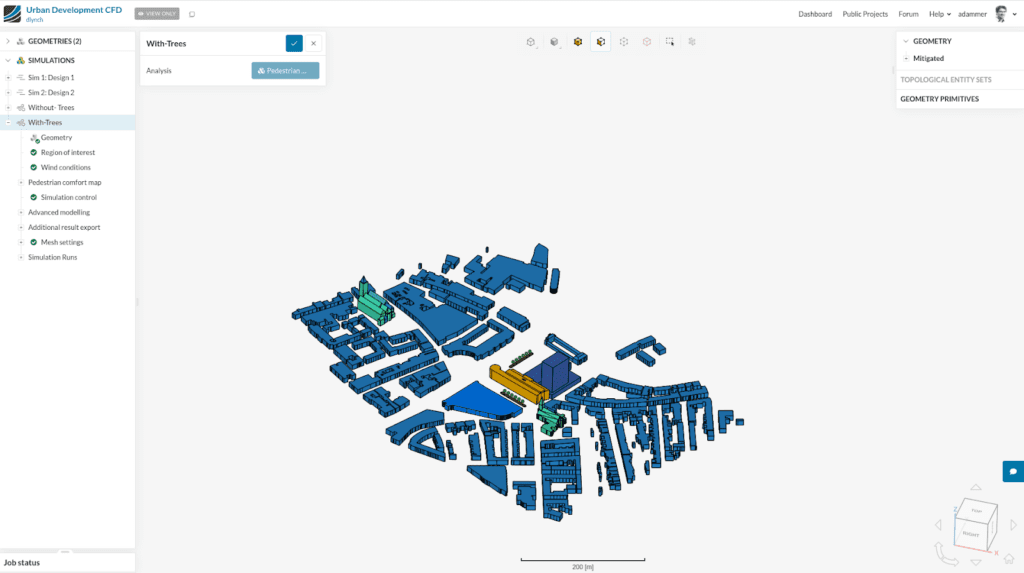
While the PWC feature within the SimScale workbench addresses robustness and computational resource concerns, it still did not fully bridge the gap to the existing in-house workflows and tooling like CAD software used by architects.
SimScale offers robust simulation capabilities for wind studies in the cloud, with all the benefits in cost efficiency, scalability, and zero maintenance. Thornton Tomasetti was already a customer and using the SimScale PWC feature via SimScale’s standard web browser interface, the workbench.
One requirement the workbench did not satisfy was a seamless integration into existing tooling and workflows. To that end, SimScale developed its API: a programming interface that allows external software to leverage SimScale’s software stack for geometry handling, meshing, simulation, and result processing.
Based on SimScale’s API, and Rhino and Grasshopper, Thornton Tomasetti developed a digital wind tunnel app that is both parts of the accepted and well-working in-house tooling, and offers a robust and zero-maintenance cloud-solution for CFD.
A designer or architect can now use the Digital Wind Tunnel app to set up wind studies themselves, including parallel studies. The app includes run time and cost estimation as well, just as the workbench.
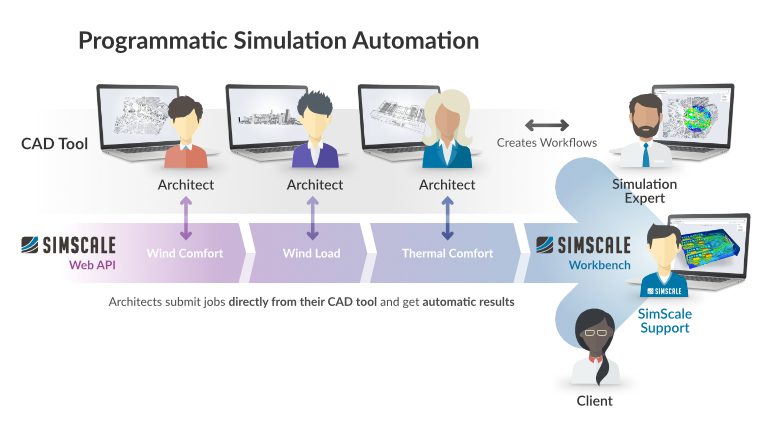
Future ideas include further automated result post-processing steps, and connecting result data from SimScale to further structural simulations in software like ETABS.
Sign up for SimScale
and start simulating now